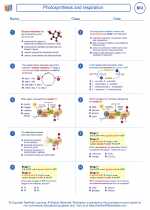Silver
Silver is a chemical element with the symbol Ag and atomic number 47. It is a soft, white, lustrous transition metal. Silver has been used for various purposes throughout history, including as a currency, in jewelry, and in various industrial applications.
Physical and Chemical Properties of Silver:
- Atomic Symbol: Ag
- Atomic Number: 47
- Atomic Mass: 107.87 g/mol
- Physical State at Room Temperature: Solid
- Color: Silver-white
- Melting Point: 961.8°C
- Boiling Point: 2162°C
- Density: 10.49 g/cm³
- Electron Configuration: [Kr] 4d10 5s1
Uses of Silver:
Silver has a wide range of applications, including:
- Manufacture of jewelry and silverware
- Photography
- Electrical contacts and conductors
- Medicine (e.g., in wound dressings and medical devices)
- Water purification
- Currency and investment
Environmental and Health Concerns:
While silver is generally considered to be a safe element, exposure to high levels of silver can cause a condition called argyria, in which the skin and mucous membranes turn gray or blue-gray. It is important to handle and dispose of silver compounds and products containing silver responsibly to minimize environmental impact.
Study Guide:
When studying silver, it is important to understand its physical and chemical properties, its uses in various industries, and the potential environmental and health concerns associated with its use. Be sure to familiarize yourself with the electron configuration of silver and its position in the periodic table. Additionally, consider the historical significance of silver and its role as a currency throughout different civilizations.
Practice identifying silver in its various forms and compounds, and understand its role in modern technologies such as electronics and medicine. Finally, explore the economic and geopolitical aspects of silver production and trade, and its value as a precious metal.
[Silver] Related Worksheets and Study Guides:
.◂Biology Worksheets and Study Guides High School. Photosynthesis and respiration

 Worksheet/Answer key
Worksheet/Answer key
 Worksheet/Answer key
Worksheet/Answer key
 Worksheet/Answer key
Worksheet/Answer key
 Vocabulary/Answer key
Vocabulary/Answer key
 Vocabulary/Answer key
Vocabulary/Answer key
